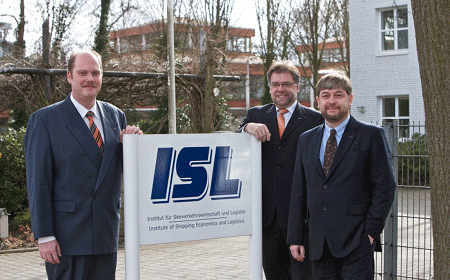ATC's
Simon Keeps It Simple
If you ask Morand Simon, ATC
Aviation’s point man in France, about market conditions
as 2012 moves along, the youthful country manager (who admits
to practicing the art of Judo when not at the airport) admits
candidly:
“The economic downturn
can be felt in France—the expected end of the year boom
did not happen.
“The big challenge is
rates as belly operators are all in competition pushing the
rates down.
“It’s an old story
as too much capacity is out there chasing too little cargo.
“Also in 2012, as in 2011,
carriers from the Middle East are now offering options for
shippers via their hubs to all destinations and it becomes
more and more difficult for the competition to follow the
trend.
But perhaps the art of judo,
meaning “gentle way”, which espouses the notion
of maximum efficiency paired with minimum effort to establish
mutual welfare and benefit, is what helps Mr. Simon and ATC
look forward with positivity.
“ATC fortunately has,
from the beginning, specialized offering services into the
Africa and Indian Ocean area.
“Our client list is a
who’s who with companies such as Air Madagascar, Air
Méditerranée, Air Seychelles, Gabon Airlines,
Stabo Air, Syrian Air, Yangtze River Express Airlines and
AgroAr in our service spectrum where we offer a full range
of cargo products for agent customers.
“Look, we know that there
are plenty of options for air cargo operators out there.
“No one has a lock on
this business or can afford to take anything for granted.
“At ATC France we always
try to offer something different from the others—to
go the extra mile in our service effort and to always be at
hand for our clients.
“Thanks to our airline
partners, even though business is challenged we have managed
to make the difference and that has meant we continue to grow
our business.
“As mentioned, when it
comes to competencies, you simply cannot fake it or phone
it in.
“The high level of knowledge
our staff has, which is largely comprised of specialists from
the airline industry, adds an edge that allows ATC to offer
a full range of services to our customers while also delivering
absolute top line expertise in working with full freighter
operators.
“Our in-house air cargo
specialists offer the experience and expertise to be very
proactive in optimizing every aspect of the air cargo supply
chain for maximum benefits all around.”
Morand Simon has been with ATC
since 1988.
He admits that he is an air
cargo guy for life, saying:
“The airline industry
is like a fine wine; once you have the taste you cannot ignore
it.
“ATC is one of the leading
Cargo GSA organizations and growing very quickly, so that
makes this job even more exciting.
“I take great pleasure
in creating solutions for any challenge.
“This job is never boring.”
Outside of air cargo, Morand
Simon lists family, the aforementioned judo and mountain walking
as his priorities to bring fulfillment and well-rounded joy
to his life.
Morand also admits, having studied
sales and economics, that if he were not in air cargo, “I
would be serving in the Army.”
Judging by the solid success
he is building for ATC France, change is definitely not in
the wind.
Morand Simon is quick to credit
Daniel Graf, who mentored him into the business:
“Thanks to Daniel, I learned
the GSA business.
“I also owe much to Pierre
Brunet, for his vision of the vital role the GSA plays in
the air industry.”
In 2012 Morand points to continued
growth tied to “the close collaboration with the French
speaking areas in Africa and in the Indian Ocean.”
This long time air cargo professional
thinks, an area the industry can improve is “the airlines
that carry the goods should stop settling for less and less
revenue whilst other actors in the supply chain make good
money.”
Geoffrey |







 “Moreover,
South America and India will play an increasingly important
part in future.
“Moreover,
South America and India will play an increasingly important
part in future.